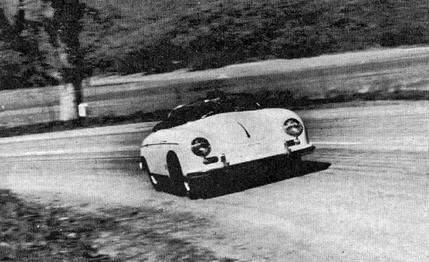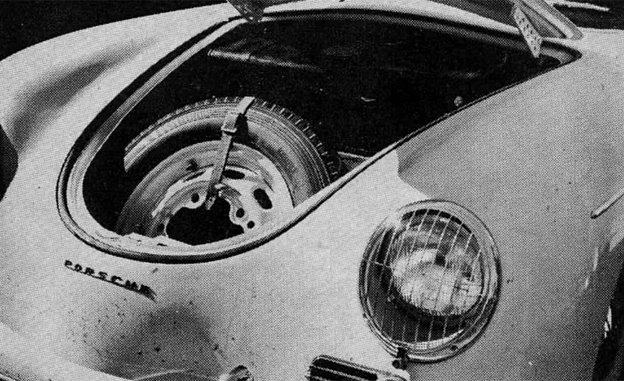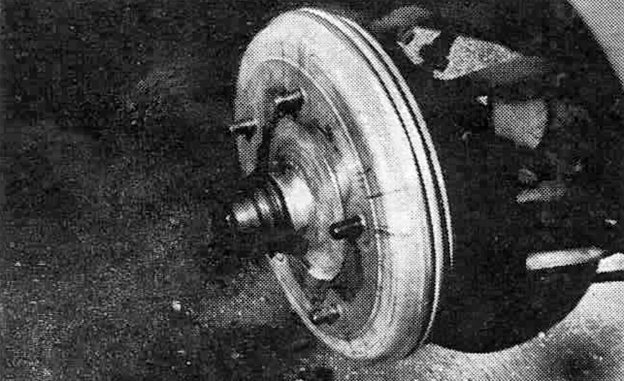
 Archived Road Test
From the June 1956 issue
Archived Road Test
From the June 1956 issue
The new Porsche 1600 is one of the world's truly fine cars. Every hour you spend with it adds to your appreciation of the excellence of its design, workmanship, and performance. It's a supremely good machine in traffic or on the open highway and a world-beater on winding roads. It makes you hunger for a handy Alp to slide up and down all day. As a precision instrument for maintaining high average speeds regardless of terrain, it's a revelation.
At no increase in price over its 1500 cc predecessor, the 1600 offers six percent increases in horsepower and displacement and a five percent increase in torque. Calculations based on the car's pulling power and tractive resistance indicate that the actual output of the 1582 cc, 96.5 cubic inch engine is more, not less, than the factory-advertised 70 bhp figure.
The Speedster, as the roadster model is called, lists at $2995 at U. S. port of entry and can be driven away for about $3200 after all fees and compulsory options have been cared for. You don't get much iron as such for your money but you do get an engineering masterpiece in the full, literal sense of the term.
Even though this is a country in which the fact or illusion of size is often a criterion of quality, enough Americans dig the Porsche right now so that, if not another order were placed, the factory could continue to operate at full tilt for at least a couple of years. The cars are very difficult to come by.
For example, the last shipment for the Southwest consisted of ten 1600's to be doled out among 38 howling dealers. I managed to obtain a test car only by the grace of the deity and film producer Manny Post, whose passion for Porsches caused him to add Europa Motors of North Hollywood to his properties. Mr. Post handed me the keys to his personal spanking new Speedster and said, "Don't let the low mileage inhibit you. Just get the lube oil warm, then go ahead and stand on it." His instructions were obeyed to the letter and with profoundly educational results.


In a road test last month I mentioned that I am not an exponent of the controlled slide. Now, thanks to living with the Porsche for a few days, I am.
I don't like to push my driving prejudices at others but it's necessary here to illustrate the point. In a car with a mushy, tentative road-bite I drive with caution born of doubt. In a car with a tenacious, glued feel I'm so grateful for the being-on-rails sensation that I have no desire to exchange it for a technique of skidding that would only serve a purpose in competition. And then along comes the Porsche.
Its engine, of course, is mounted at the rear, aft of the pendulum-type rear axle. Our test car, with the fuel tank about three-quarters full, weighed 1680 lbs. and almost 58 percent of this bore on the rear wheels. The springing is typically Porsche, by laminated transverse torsion bars acting through trailing links at the front and solid, adjustable transverse bars at the rear acting through trailing arms.
The unorthodox weight distribution and suspension give the car handling qualities that are rather unique. At slow speeds it handles quite normally in turns, and the feel is on the moderately "glued" side. Then, at only slightly higher speed, its character changes entirely. In place of a four-square chassis bite on the road you have the rear end of the car slipping toward the outside of the curve.
Most of us have an instinctive aversion to this sensation which, in the average car, means you've lost it. When it happens to you in a Porsche for the first time you're more than likely to be startled if not plainly scared. This rear-end slip is not like that of a "glued" chassis when it hits a patch of dirt —biting firmly, then sideslipping for a split second, then snapping into the rails again. The Porsche does not break away suddenly. It drifts from inside to outside in a gentle, casual way. The sensation is very much like cornering on half-inflated tires.
Is this bad? Only if you believe it is. Is it good? Emphatically yes, if you accept and understand it. You can corner a Porsche in a sedate and conventional manner if you choose. Just as easily, you can wag its tail and get through short, tight-radius turns with amazing nimbleness and speed. In more open curves you can drift all four wheels and the smooth transition from bite to slip is almost imperceptible.


The slip effect is as though the car were on a pivot at the front end. You pop the Porsche into a tight turn, deliberately flip the rear end outward so that the car is perfectly aimed to leave the turn, then head for the straight under full acceleration. In turns that are not too tight you can steam through under power all the way, directing the car by a combination of steering wheel, rear-wheel or four-wheel slip, and throttle. Thanks to these characteristics and a set of magnificent brakes the Porsche is hilariously controllable and agile.
Drifting this ultra-light car seems to have no undue effect on tire wear. Charging down a steep mountain road containing 63 hairpin switchbacks produced the impression that the 1600 spent all its time on the tires' sidewalls.
But at the bottom I got out and checked the German Dunlops and found that the shoulder where tread joins sidewall was as sharp as when new. Incidentally, marks were made on the rims and sidewalls at the beginning of the road test. In spite of much heavy acceleration and braking, there was no slippage of the tires on the rims.
It's clear that the Porsche's delightful "driftability," which helps it to achieve high average speeds, impressed me as the car's most spectacular feature. But it's a distinguished car in many other ways.
In spite of its light weight the 1600 is rock-solid and stable at all speeds. There is scarcely any perceptible difference in sensation inside the car between speeds of 20 and 80 mph. Above that, our test machine's suspension became slightly harsh, possibly because it was too new for lubricant to have fully penetrated the leaves of the laminated front torsion bars. In common with the ride of many continental cars, the 1600's is slightly firm on a good road surface and scarcely different on the very worst surface.